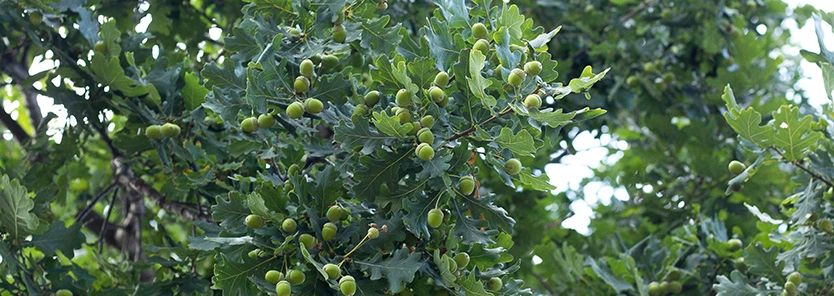Thinning timber to increase mast production:
In a timber stand where trees grow unattended, oaks and other nut-bearing trees may never reach their full potential. An added bonus for thinning a timber stand is the fact that if you choose to select cut some of the timber, the revenues can be reinvested into the property. Please remember before you stick a chainsaw into a tree, wear proper protective gear and never exceed what you are capable or comfortable in doing.
Let’s make it clear, however, that not every tree that doesn’t produce sustenance should be removed. Timber stand tune-ups are about maximizing your timber stand’s potential for the wildlife’s sake. Select areas should be allowed to have thickets and dense timber stands so that nesting turkeys and wary deer can find cover. As you thin the timber you can use the trees to help create cover amidst your timber stand. Large treetops can be left where they fall to create long-lasting cover.
To thin your timber stand you may indeed choose to fell some trees completely, but hinge-cuts may be used in other areas to create thick woody cover in your forest. This allows the tree to stay attached to the stump and it will continue to grow for a few years. This creates a “living brush pile.”
You may also choose to “ring” some of the trees and allow them to stand even after they are dead. To ring the tree, you simply cut a ring entirely around the tree to cut off the flow of water and nutrients to its top. Cutting a few rings will ensure better results. No matter your method, the overall goal of getting more sunlight and nutrients to your major mast producers will be accomplished. Many state forestry departments offer incentive programs for such renovations and in some cases, they will even offer their services and advice.
Gamekeepers should learn to identify varieties of trees that don’t provide sustenance or value to their woodland plots. Some may argue that every tree has its place, and they very well do, however, when you are trying to maximize the impact that your timber stand has on the wild-life, getting rid of non-food producing or unproductive trees is important.
Trees such as poplar, evergreens, and many varieties of maple will grow vigorously in your stand. Their rapid growth consumes much-needed minerals from the soil and inhibits the overall growth and potential of other mast producing trees.








